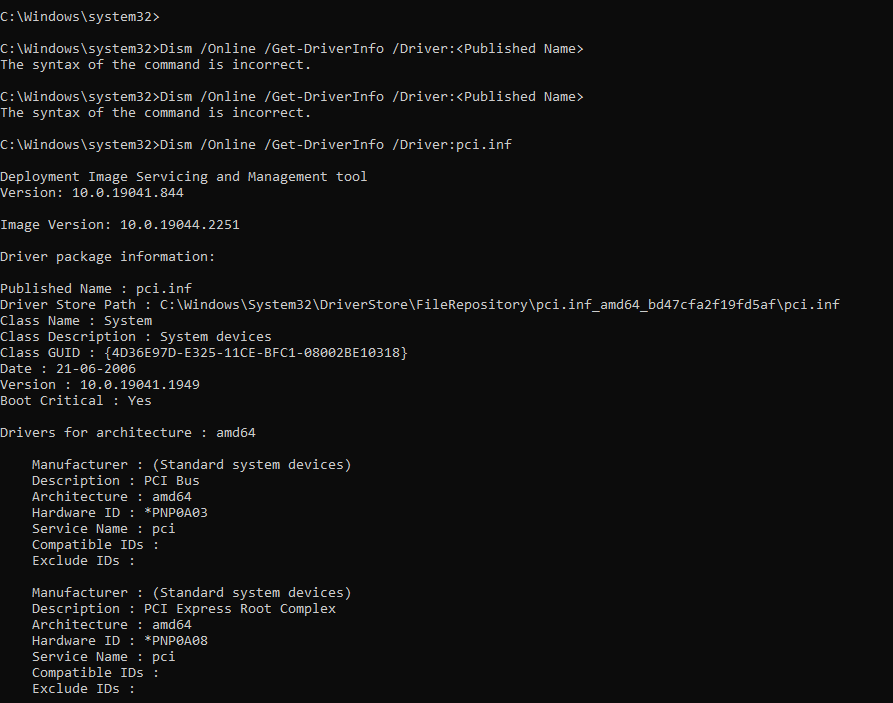Your PC has a hardware ID for each device. It is unique among all the devices and the driver for the same can be downloaded or updated. A hardware ID, which combines the bus type, manufacturer, and device identifier, is helpful when troubleshooting a problem with a specific device. Let’s look at how to retrieve the hardware IDs from the Windows 10 computer in this article.
How To Find The Hardware ID of A Driver In Windows
Method 1: Utilize The Device Manager
Step 1: Press Windows + R to launch the run prompt.
Step 2: Type devmgmt.msc into the run prompt, followed by the Enter key. The device manager will open as a result.

Step 3: Expand the category that includes the driver whose Hardware ID you want to know.
Step 4: Use the right-click menu to select the driver whose ID you want to verify.
Step 5: Select “Properties” from the context menu.

Step 6: Go to the Details tab.
Step 7: Select Hardware IDs from the Property drop-down menu.

Step 8: The Value field in this step displays all Hardware IDs.

Also Read: Device Manager not Working on Windows 11? Here’s the Fix!
Method 2: Use The Command Prompt To Find The Hardware ID
Step 1: Press Windows + S on your keyboard to open Windows Search.
Step 2: Type CMD and locate Command Prompt app under Best Match.
Step 3: Click on Run As Administrator to launch the Command Prompt in elevated mode.
Step 4: Select Yes on the user account management window. By doing this, the command prompt will launch in administrator mode.
Step 5: Copy the command below, paste it into the command prompt, then press Enter.
Dism /Online /Get-Drivers /all /Format:Table

Step 6: Write the published name down or copy it.

Step 7: After doing so, copy and paste the command found below into the command prompt and press Enter.
Dism /Online /Get-DriverInfo /Driver:<Published Name>
Step 8: Replace <Published Name> in the command with the copied published name from Step 6.

Step 9: It will provide a complete list of the driver’s information for the aforementioned category.
Step 10: This is where you will find the device’s Hardware ID.
Also Read: Fix Windows Command Prompt That Randomly Appears and Disappears
Method 3: Use Windows PowerShell To Locate The HardwareID
Step 1: Press the Windows + X keys simultaneously to bring up a menu like shown below.; From there, simply select Windows PowerShell (Admin).
Step 2: Select yes in the user account management window that will open. With this, the PowerShell window will launch in administrator mode.
Step 3: Copy the command below, put it in PowerShell, and then press Enter.
Get-PnpDevice -PresentOnly | Sort-Object -Property “Class” | Format-Table -AutoSize

Step 4: Use the Class and FriendlyName to search for your device. Copy or make a note of the instance ID.

Step 5: Copy the command below, paste it into PowerShell, and press Enter. Make sure to replace the Step 4 copy of the Instance Id for it.
Get-PnpDeviceProperty -InstanceId "Instance Id" | Format-Table -AutoSize

Step 6: To find the necessary data, look for DEVPKEY Device HardwareIds in the output.
Also Read: How to Update Powershell on Windows 11
Bonus Advice: Keep Your Drivers Up-To-Date

Small software packages called drivers assist in building a communication link between hardware and software. Thus, it’s crucial to always maintain your drivers updated to make the best use of the hardware. These are the three methods for updating drivers:
Use the company website. Every manufacturer of hardware maintains a dedicated website from which customers can get the most recent drivers. This approach takes time and you need to have the necessary technical knowledge to ensure you always have the recent drivers.
Use Device Manager. Device Manager, a driver updater program provided by Microsoft, is a part of the Windows operating system. Although simple to use, it has a significant drawback. You might not receive the recent updated driver for a while because the Device Manager only checks on Microsoft servers for driver updates.
Utilize the Advanced Driver Updater. It is simple to use third-party software. A few mouse clicks are needed for Advanced Driver Updater to scan your system for obsolete, missing, and corrupt drivers. After the detection procedure is finished, a simple mouse click updates all of the outdated drivers to the recent latest and most compatible versions.
The Final Word
The above three methods will help you to obtain your Hardware ID. Hardware ID comes in handy when you are manually updating the appropriate drivers. Alternatively, we suggests users take the help of third-party driver updater applications like Advanced Driver Updater to automate the process of installing bulk driver updates.
Please let us know in the comments below if you have any questions or recommendations. We would be delighted to provide you with a resolution. We frequently publish advice, tricks, and solutions to common tech-related problems. You can also find us on Facebook, Twitter, YouTube, Instagram, Flipboard, and Pinterest.


 Subscribe Now & Never Miss The Latest Tech Updates!
Subscribe Now & Never Miss The Latest Tech Updates!